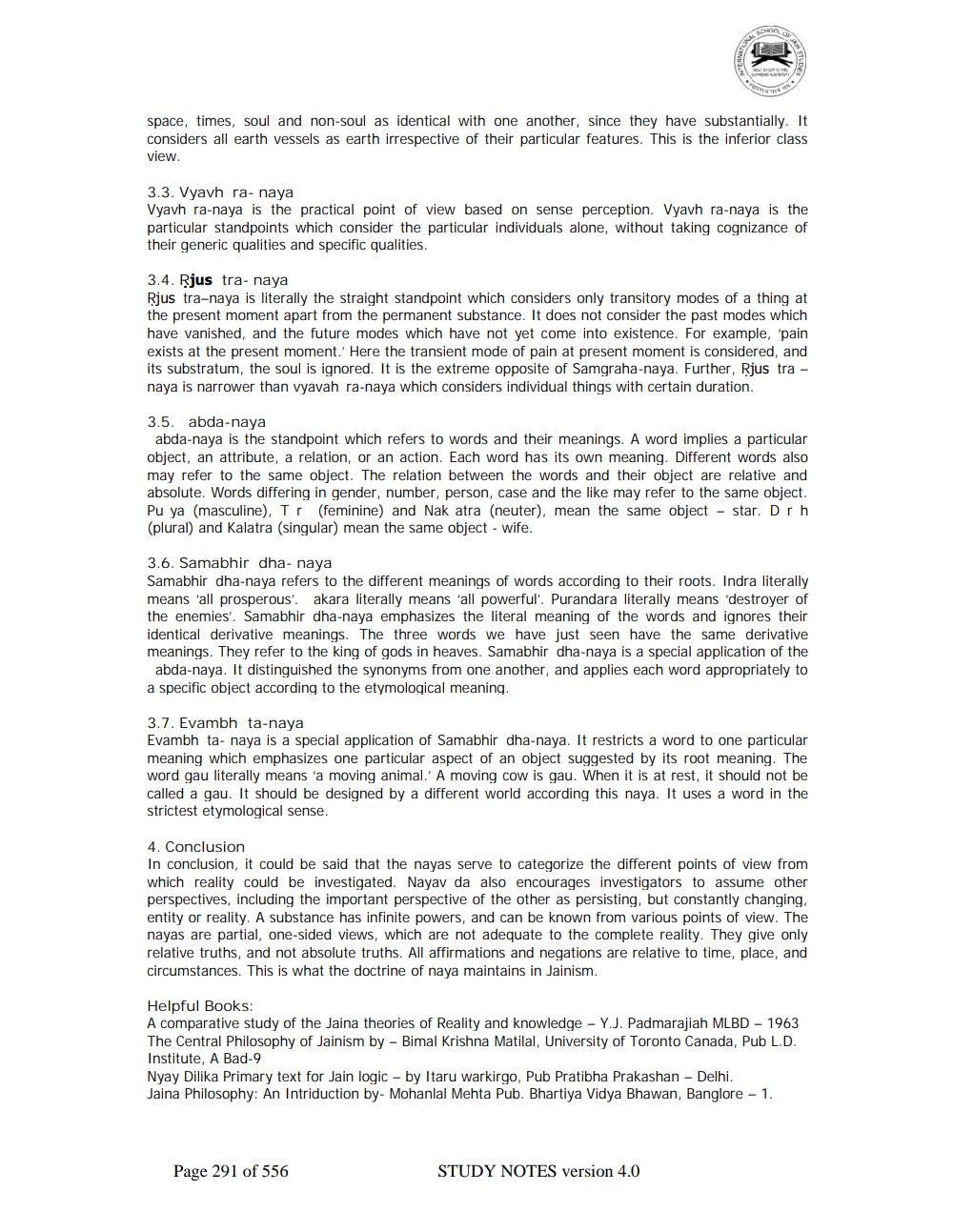________________
space, times, soul and non-soul as identical with one another, since they have substantially. It considers all earth vessels as earth irrespective of their particular features. This is the inferior class view.
3.3. Vyavh ra- naya
Vyavh ra-naya is the practical point of view based on sense perception. Vyavh ra-naya is the particular standpoints which consider the particular individuals alone, without taking cognizance of their generic qualities and specific qualities.
3.4. Rjus tra- naya
Rjus tra-naya is literally the straight standpoint which considers only transitory modes of a thing at the present moment apart from the permanent substance. It does not consider the past modes which have vanished, and the future modes which have not yet come into existence. For example, 'pain exists at the present moment.' Here the transient mode of pain at present moment is considered, and its substratum, the soul is ignored. It is the extreme opposite of Samgraha-naya. Further, Rjus tra - naya is narrower than vyavah ra-naya which considers individual things with certain duration.
3.5. abda-naya
abda-naya is the standpoint which refers to words and their meanings. A word implies a particular object, an attribute, a relation, or an action. Each word has its own meaning. Different words also may refer to the same object. The relation between the words and their object are relative and absolute. Words differing in gender, number, person, case and the like may refer to the same object. Pu ya (masculine), Tr (feminine) and Nak atra (neuter), mean the same object - star. Dr h (plural) and Kalatra (singular) mean the same object - wife.
3.6. Samabhir dha- naya
Samabhir dha-naya refers to the different meanings of words according to their roots. Indra literally means 'all prosperous'. akara literally means 'all powerful'. Purandara literally means 'destroyer of the enemies'. Samabhir dha-naya emphasizes the literal meaning of the words and ignores their identical derivative meanings. The three words we have just seen have the same derivative meanings. They refer to the king of gods in heaves. Samabhir dha-naya is a special application of the abda-naya. It distinguished the synonyms from one another, and applies each word appropriately to a specific object according to the etymological meaning.
3.7. Evambh ta-naya
Evambh ta- naya is a special application of Samabhir dha-naya. It restricts a word to one particular meaning which emphasizes one particular aspect of an object suggested by its root meaning. The word gau literally means 'a moving animal.' A moving cow is gau. When it is at rest, it should not be called a gau. It should be designed by a different world according this naya. It uses a word in the strictest etymological sense.
4. Conclusion
In conclusion, it could be said that the nayas serve to categorize the different points of view from which reality could be investigated. Nayav da also encourages investigators to assume other perspectives, including the important perspective of the other as persisting, but constantly changing, entity or reality. A substance has infinite powers, and can be known from various points of view. The nayas are partial, one-sided views, which are not adequate to the complete reality. They give only relative truths, and not absolute truths. All affirmations and negations are relative to time, place, and circumstances. This is what the doctrine of naya maintains in Jainism.
Helpful Books:
A comparative study of the Jaina theories of Reality and knowledge - Y.J. Padmarajiah MLBD - 1963 The Central Philosophy of Jainism by - Bimal Krishna Matilal, University of Toronto Canada, Pub L.D. Institute, A Bad-9
Nyay Dilika Primary text for Jain logic - by Itaru warkirgo, Pub Pratibha Prakashan - Delhi. Jaina Philosophy: An Intriduction by- Mohanlal Mehta Pub. Bhartiya Vidya Bhawan, Banglore - 1.
Page 291 of 556
STUDY NOTES version 4.0




